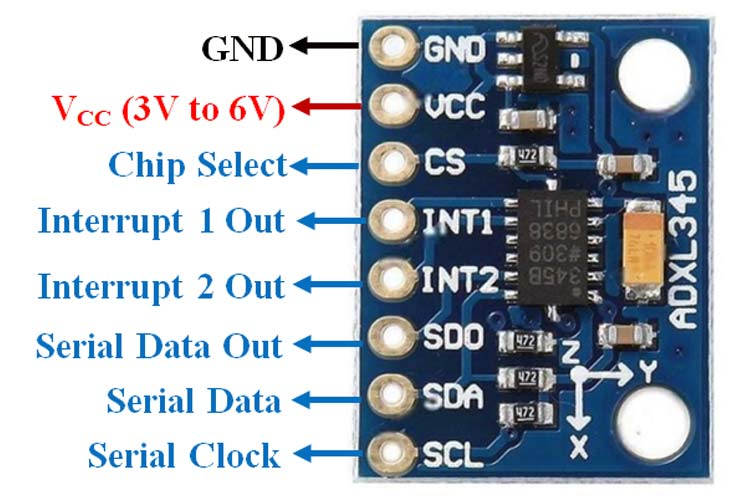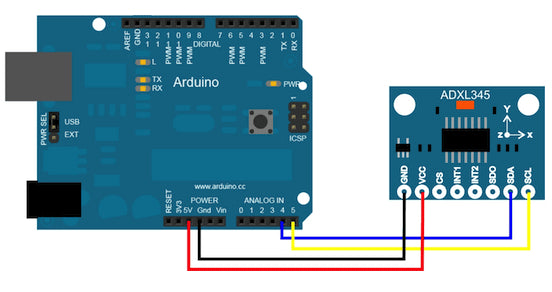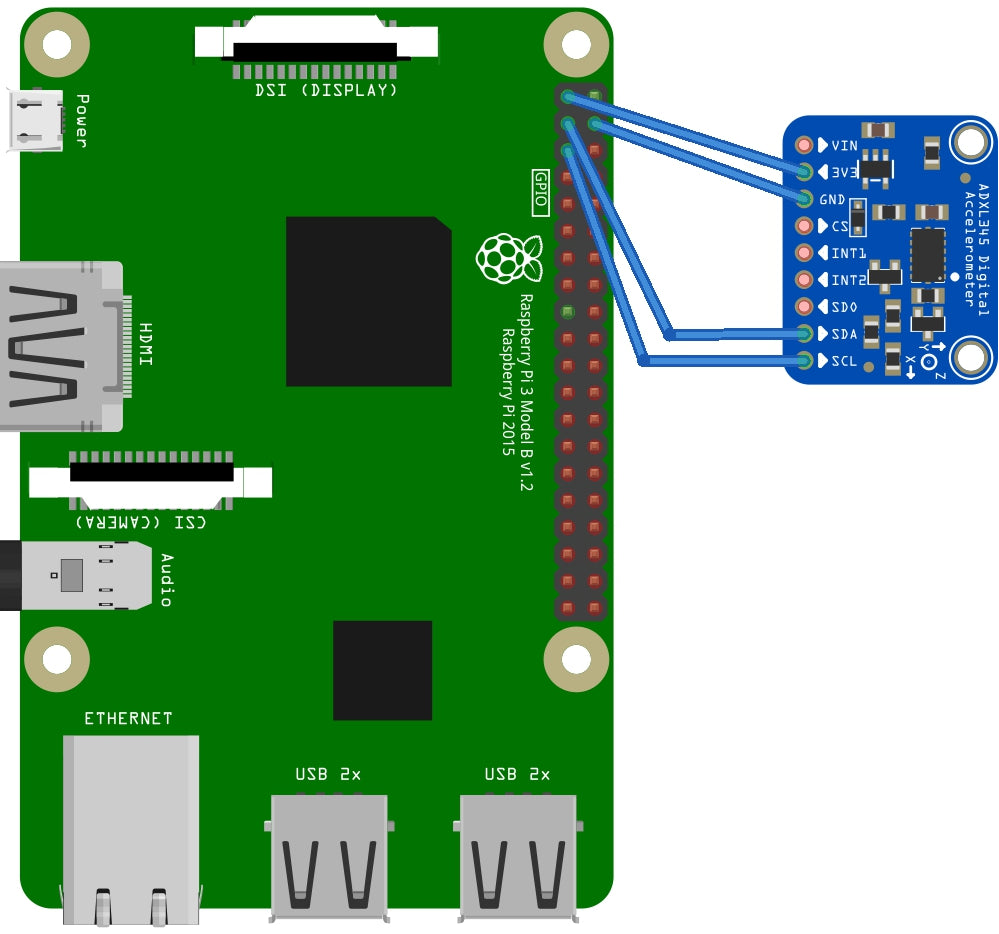ADXL345 Tripple Axis Digigal Accelerometer Board





ADXL345 Tripple Axis Digigal Accelerometer Board
Available:In Stock
- Product SKU: KG022
₹ 146
₹ 199
Need Volume Discounts? Deals are specially designed for you. Click here
Need Customization? Provide us more details Click here
🏠
Warehouse Details:


Specification
Description
The ADXL345 Triple Axis Accelerometer Board is a compact, low-power 3-axis accelerometer that offers high-resolution measurements (13-bit) of up to ±16g. The digital output data is formatted as 16-bit two’s complement and can be accessed via either an SPI (3- or 4-wire) or I2C digital interface.
This accelerometer is ideal for mobile device applications, measuring both static acceleration from gravity in tilt-sensing applications and dynamic acceleration due to motion or shock. Its high resolution (4 mg/LSB) allows for the detection of inclination changes as small as 1.0°.
The board includes several special sensing features: activity and inactivity sensing can detect motion presence or absence based on user-defined acceleration thresholds. Tap sensing recognizes single and double taps, while free-fall sensing detects when the device is falling. These functions can be linked to one of two interrupt output pins. Additionally, it features an integrated, patent-pending 32-level FIFO buffer for data storage, reducing the need for host processor intervention.
Low power modes facilitate intelligent motion-based power management, enabling threshold sensing and active acceleration measurement with minimal power consumption.
Note: This package does not include the Arduino board, you have to buy it separately.
This accelerometer is ideal for mobile device applications, measuring both static acceleration from gravity in tilt-sensing applications and dynamic acceleration due to motion or shock. Its high resolution (4 mg/LSB) allows for the detection of inclination changes as small as 1.0°.
The board includes several special sensing features: activity and inactivity sensing can detect motion presence or absence based on user-defined acceleration thresholds. Tap sensing recognizes single and double taps, while free-fall sensing detects when the device is falling. These functions can be linked to one of two interrupt output pins. Additionally, it features an integrated, patent-pending 32-level FIFO buffer for data storage, reducing the need for host processor intervention.
Low power modes facilitate intelligent motion-based power management, enabling threshold sensing and active acceleration measurement with minimal power consumption.
Note: This package does not include the Arduino board, you have to buy it separately.
Technical Details
- Input Supply Voltage: 3.3V ~ 5V
- Interface Type: I²C, SPI
- Sensing Range: ±2g, ±4g, ±8g, ±16g
- X-Axis Sensitivity: 28.6 LSB/g
- Y-Axis Sensitivity: 31.2 LSB/g
- Z-Axis Sensitivity: 34.5 LSB/g
- Length: 20.5mm
- Width: 15.5mm
- Height: 3.5mm
- Weight: 0.6g
Features
- Ultra-Low Power: 40µA (measurement mode), 0.1µA (standby at 2.5V)
- Free-Fall Detection
- Tap/Double Tap Detection
- Flexible interrupt modes, mappable to interrupt pin
- Measurement and bandwidth selectable via serial command
- Wide temperature range: −40°C to 85°C
- 10,000 g shock survival
- Supports 5V/3.3V input, RT9161 power chip for fast response
- User-selectable resolution
- Fixed 10-bit resolution, up to 13-bit at ±16g
Application:
- Motion Detection: Detects movement in mobile devices, laptops, and gaming controllers.
- Gesture Recognition: Enables gesture-based input in wearable devices and remote controls.
- Orientation Sensing: Used in smartphones and tablets for screen rotation.
- Fitness and Wearables: Tracks activity and motion in fitness trackers and smartwatches.
- Industrial Monitoring: Monitors vibrations and motion in machinery and equipment.
- Vehicle Stability Control: Detects tilts and vibrations in automotive systems for stability enhancement.
- Robotics: Provides orientation and motion feedback for robot navigation and control.
- Drones and UAVs: Assists with stability and navigation in unmanned aerial vehicles.
- Gaming: Enhances motion sensing in gaming controllers for immersive gameplay.
- Navigation Systems: Used in GPS devices for dead reckoning and motion tracking.
- Medical Devices: Measures motion and orientation in diagnostic and therapeutic equipment.
- Hard Drive Protection: Protects HDDs by detecting shocks and sudden movements.
Pinout Diagram of Adxl345 Accelerometer Arduino

Pin Configuration of Adxl345 Accelerometer Arduino
- GND: Ground Pin
- VCC: Power Supply Pin (3V to 6V)
- CS: Chip Select Pin
- INT1: Interrupt 1 Output
- INT2: Interrupt 2 Output
- SDO: Serial Data Output
- SDA: Serial Data Input/Output
- SDL: Serial Communication Clock
Integration with Arduino of Adxl345 Accelerometer Arduino

Sample Code
Integration with Raspberry Pi

Sample Code
Physical Attributes of ADXL345 Accelerometer Sensor
- Length: 20.5mm
- Width: 15.5mm
- Height: 3.5mm
- Weight: 0.6g
Package Includes
- 1 x ADXL345 Tripple Axis Digigal Accelerometer Board



























